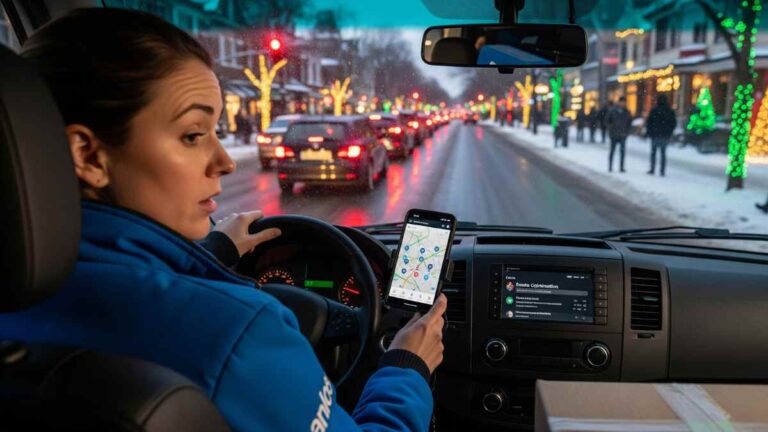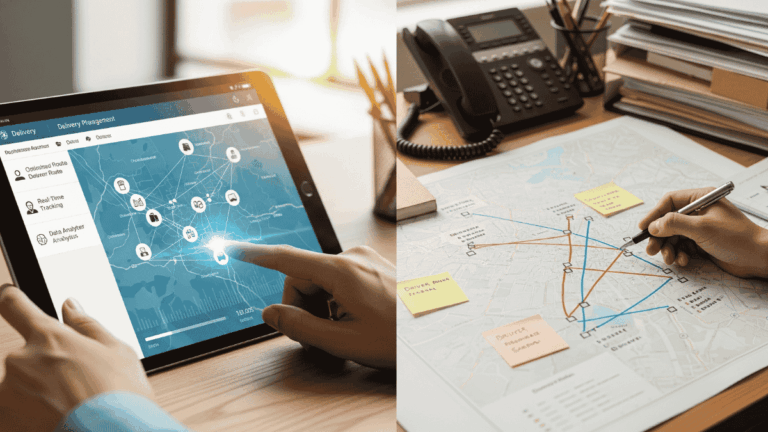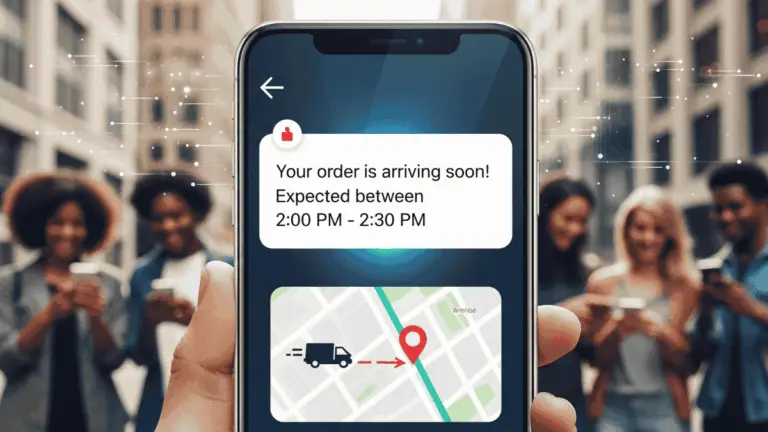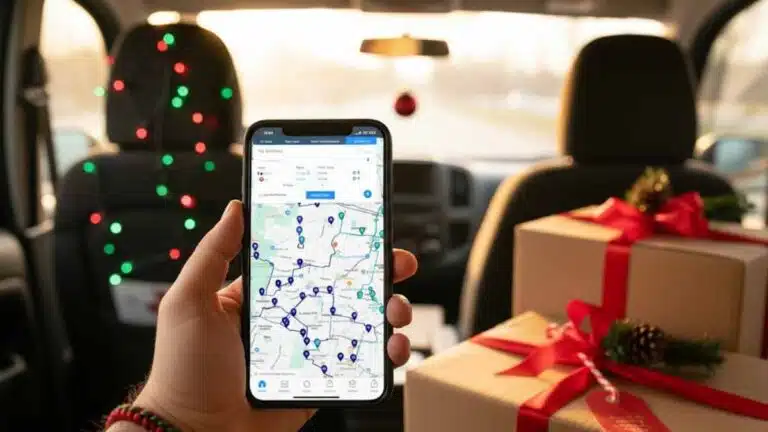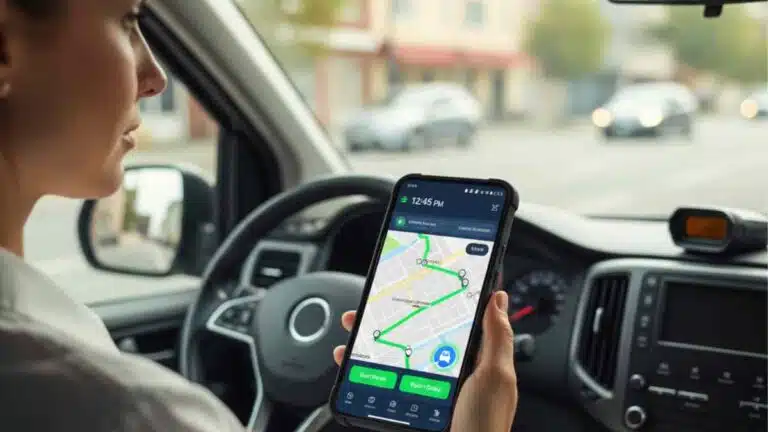Fleet management software mutes the delivery concerns of any e-commerce business owner. And those concerns can be constant and intense.
Dispatching drivers and ensuring everything is on time is a challenging skill, especially when done manually. All of this, while also making high-level business decisions, can be intimidating.
What Is Fleet Management?
Fleet management automates the coordination of vehicles on the road, enabling them to make deliveries for extended periods of time. Instead of a dispatcher calling drivers every hour to check on them, fleet management software tracks your vehicles, drivers, routes, and deliveries.
Same-day and next-day deliveries are crucial for staying competitive in the e-commerce industry. However, it is challenging to manually synchronize orders, ETAs, and delivery windows. That’s what the software does for you.
It balances speed and cost, ensuring customers trust that you’ll have their parcel ready by the same day as promised.
How Does Fleet Management Work?
It uses different components to make sure the outcome is precise. You can’t mess up when it comes to tracking your fleet and knowing where your assets are.
Fleet management software uses these five features:
- Vehicle tracking
- Maintenance scheduling
- Driver management
- Fuel consumption monitoring
Using GPS location and status updates, customers and managers know exactly where drivers are and if there is a holdup. That’s what you want. Customers are calling asking where their orders are. With the right software you can see directly where the bottlenecks are.
Customers are less frustrated when they know and can see their order getting stuck. If you are not transparent about it, they will continue to call to seek answers.
When it comes to making sure your vehicles are not costing money with unexpected breakdowns, the maintenance scheduling feature is a valuable tool.
You can set a specific alert to ensure the cars undergo regular checks. If your tyres are, for instance, not in good shape, you are using more fuel than you should be, as it needs to pull harder.
With driver management, your customers can rate your drivers, and you can get data-driven insight about the performance on the road. It’s better to address customers’ concerns before they impact the brand.
With fuel prices increasing, businesses can closely monitor their fuel usage and take action to prevent overspending before it impacts their budget.
Fleet Management Delivery Tools For Beginer Entrepreneur
When you start your business, your focus is on the product. But don’t skimp on the delivery service.
After all, it’s the last mile that impresses the customer really.
Here are four of the basic delivery tools you should have as soon as possible.
- Route optimization
- Real-time tracking
- Fleet management
- Delivery management
ALSO READ: Route Optimization: How It Works and Why It’s Essential
Route optimization
Start here. Traveling too far or getting stuck in traffic can make your only driver or drivers miss out on an entire day’s delivery work.
Route optimization software automatically calculates the most efficient sequence of stops to ensure the most effective route.
Even if you start off, and only have a few stops a day. Or whether you have 20 that day, it takes into consideration the time of the day, traffic, weather, and more.
It also updates in real-time, so if a new order comes in, it calculates a new path and updates in seconds.
Real-time tracking
Customers want to see their driver approaching their flat or business block. They want to be ready at the door to receive their parcel.
When you are new in the business, real-time tracking easily builds trust. It’s been proven over and over. Customers want to know that they can monitor the driver in real-time.
It shows customers that you respect and value their time by sending ETAs and accurately sending instant updates to build trust.
ALSO READ: What is real-time tracking?
Fleet management software
Even if you don’t have a lot of vehicles on the road delivering parcels for now, it still gets messy fast.
Fleet management software helps you keep track of maintenance schedules, compare fuel usage, and use historical data to write reports and check drivers’ performance behind the wheel.
Delivery management
Delivery management connects your orders, drivers, customers, and routes in one place. In the digital space. It handles all communication, proof of delivery, and customer feedback in one place.
You’ll spend less time chasing updates and more time improving your business, allowing you to scale.
ALSO READ: What is delivery management software?
How Can I Scale My Business From 2 Vans to 20?
If you think you can scale while using spreadsheets to manually plan your routes, think again. You need to automate important tasks to create more time and money to take on more orders.
The increased number of vans on the road makes the process of managing them more complex. With GPS visibility, you can monitor each of your vehicles and drivers in real time. This way, you can make quick adjustments and keep customers coming back for more orders.
You can either outsource your delivery during peak seasons, but you will lose some control over the delivery experience. Alternatively, you can utilize in-house fleets and ensure that you are aware of any instances where a customer is dissatisfied with one of your drivers.
It’s also easier to communicate directly with your customers when you make use of your own delivery drivers and vans.
ALSO READ: Dispatch and Delivery Planning for Small Businesses: 10 Essential Tips
How to Avoid Common Beginner Mistakes
You have your hands full with the new business, but don’t skimp on these simple and small mistakes that can, in fact, tank your business.
- Ignoring driver feedback: The quicker you respond, the quicker you can make sure a customer is happy and doesn’t leave a bad review.
- Not collecting data on failed deliveries: When you can establish why deliveries are failing, you can fix it and save money. It’s also best to do regular training sessions with drivers.
- Skipping preventative maintenance: You might think you are saving money now by not maintaining your vans, but it will cost you more in the end when there is a breakdown.
About the author
Mia is a multi-award-winning journalist. She has more than 14 years of experience in mainstream media. She's covered many historic moments that happened in Africa and internationally. She has a strong focus on human interest stories, to bring her readers and viewers closer to the topics at hand.




